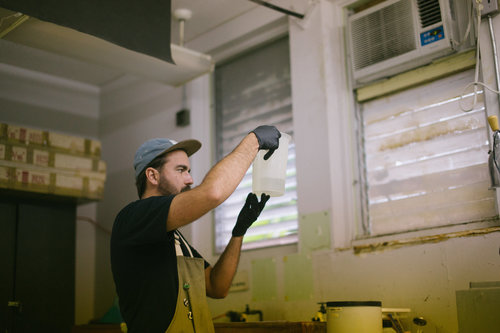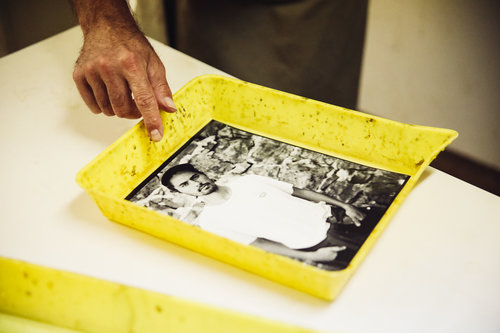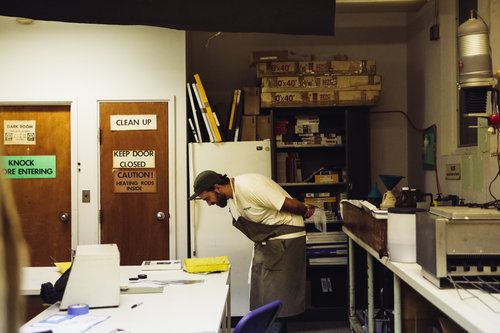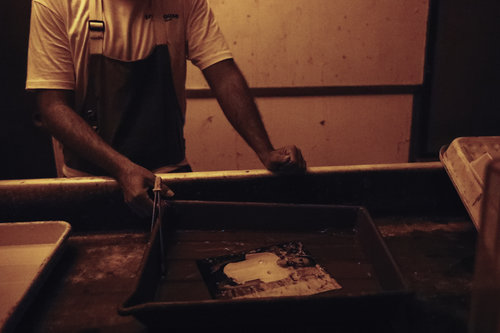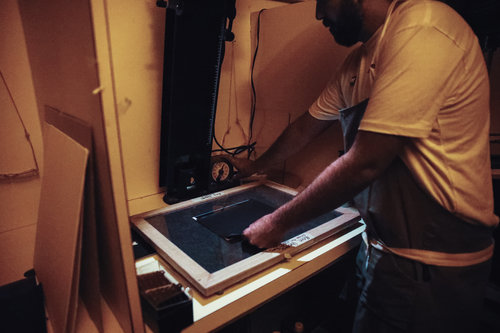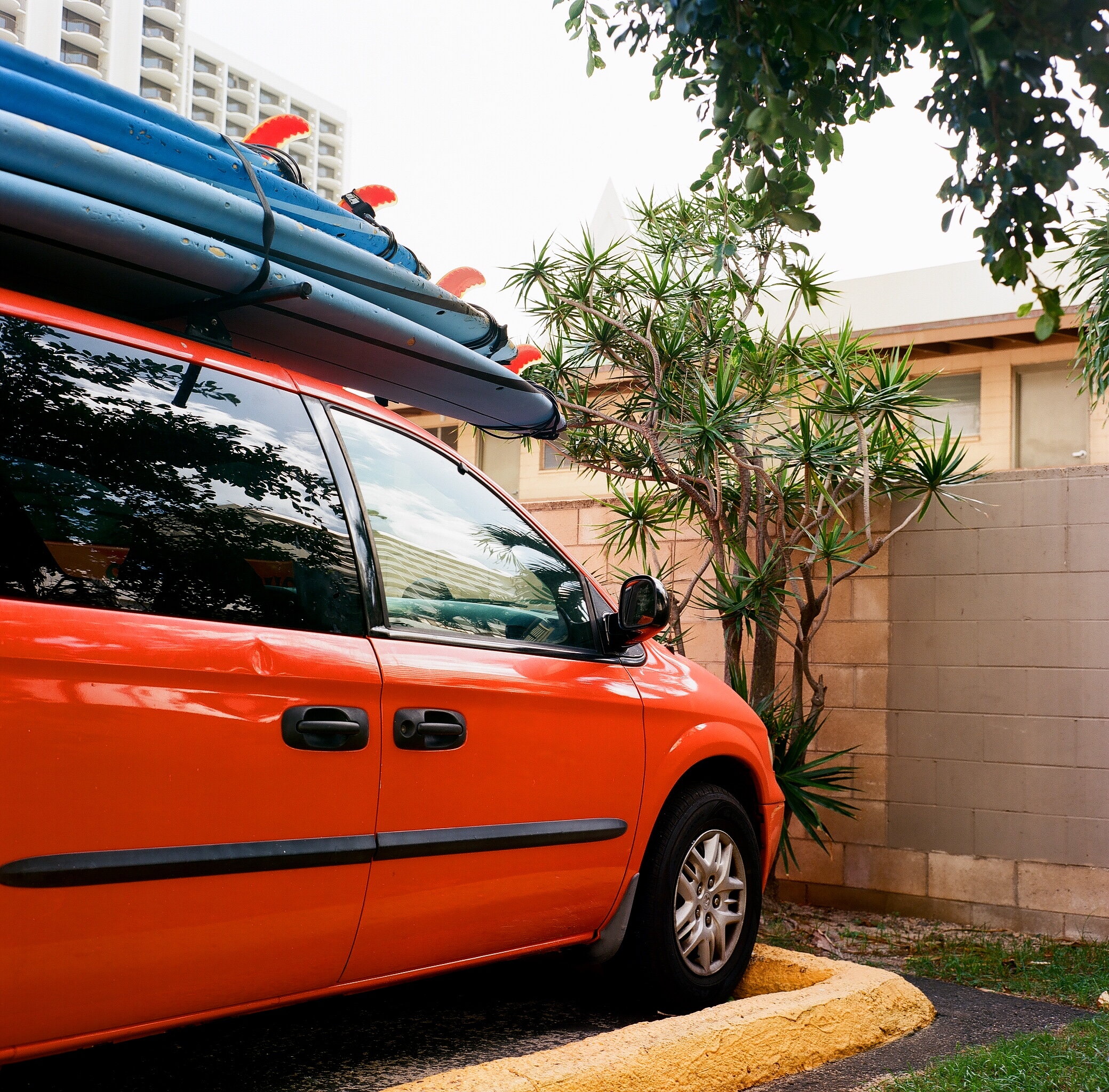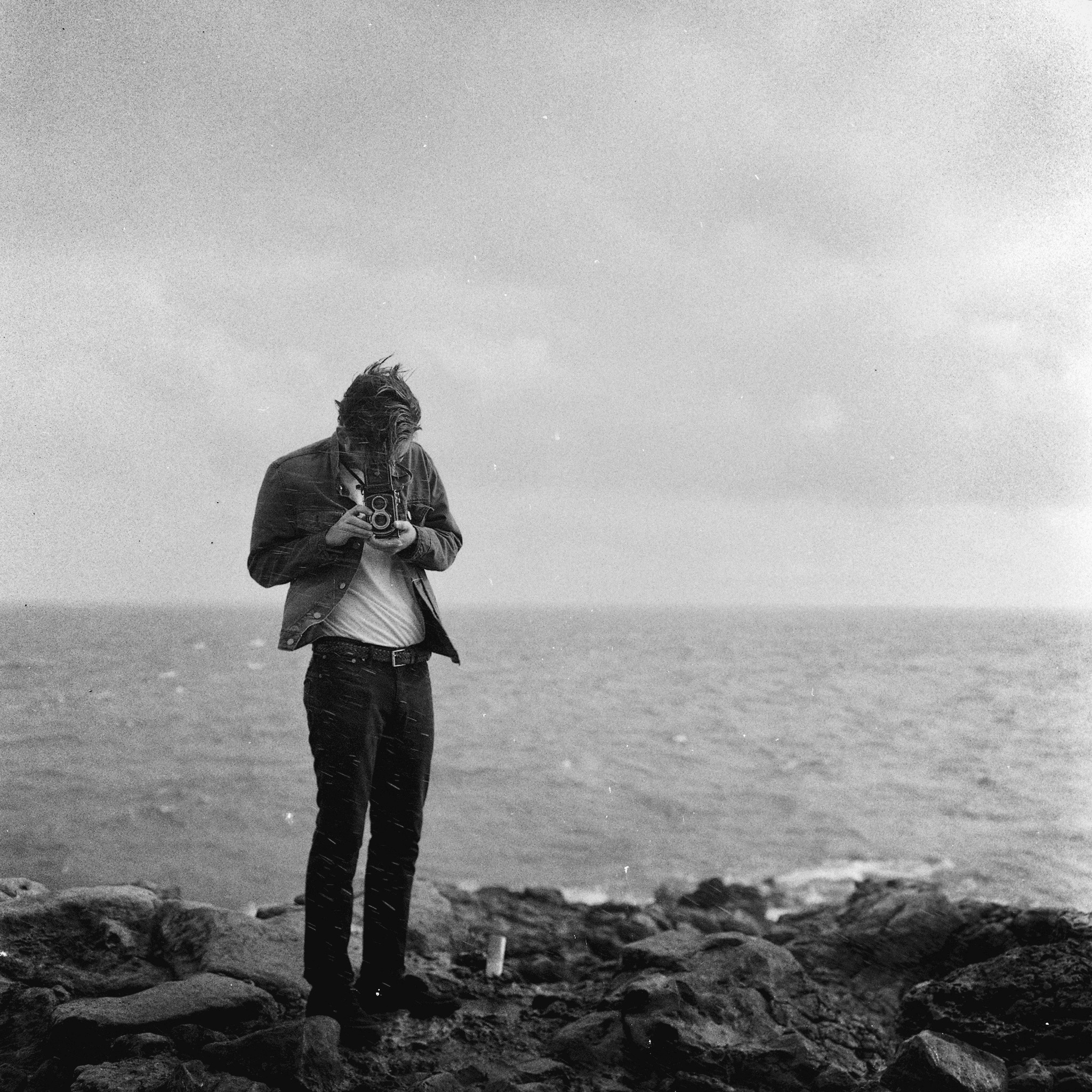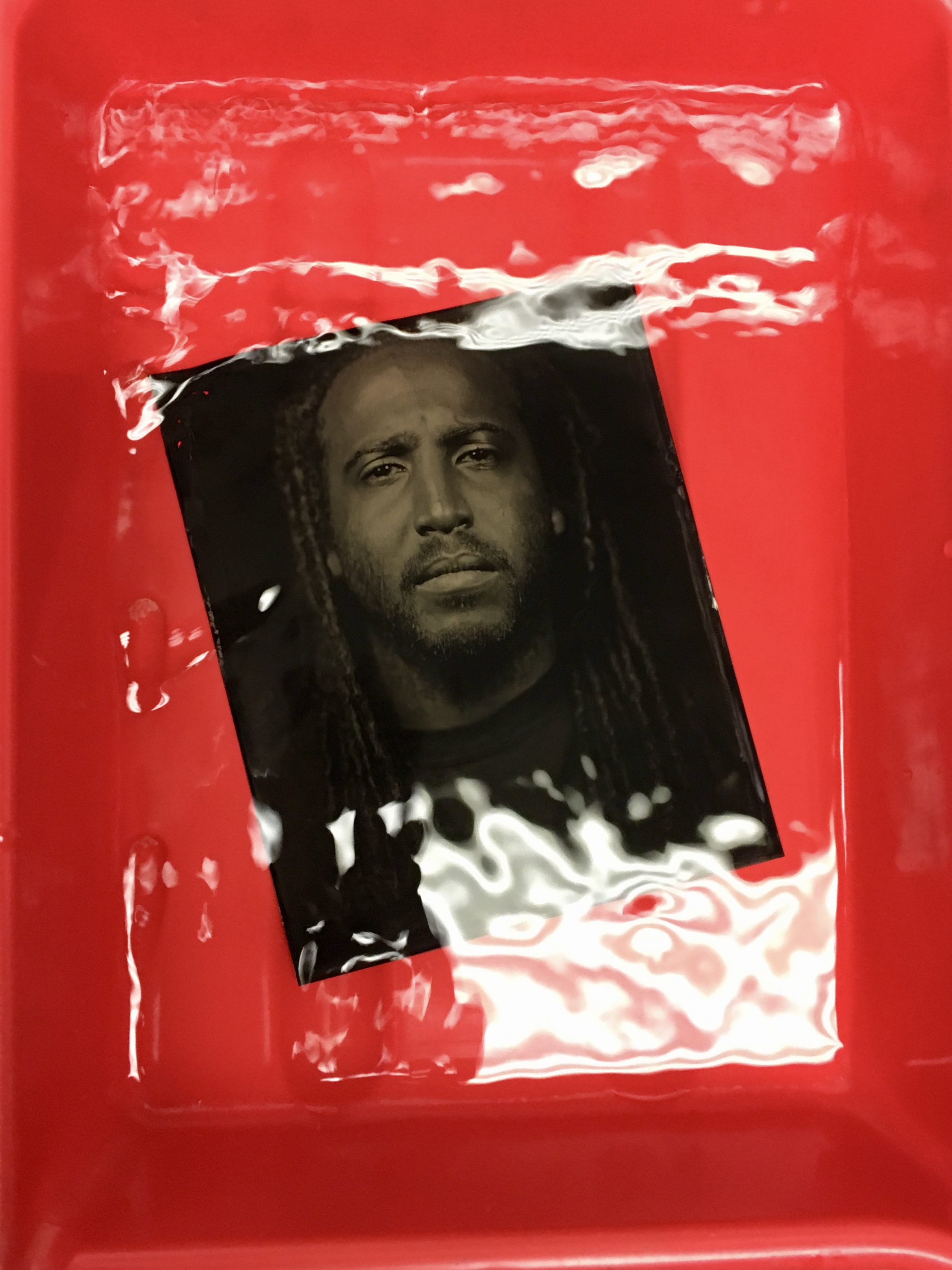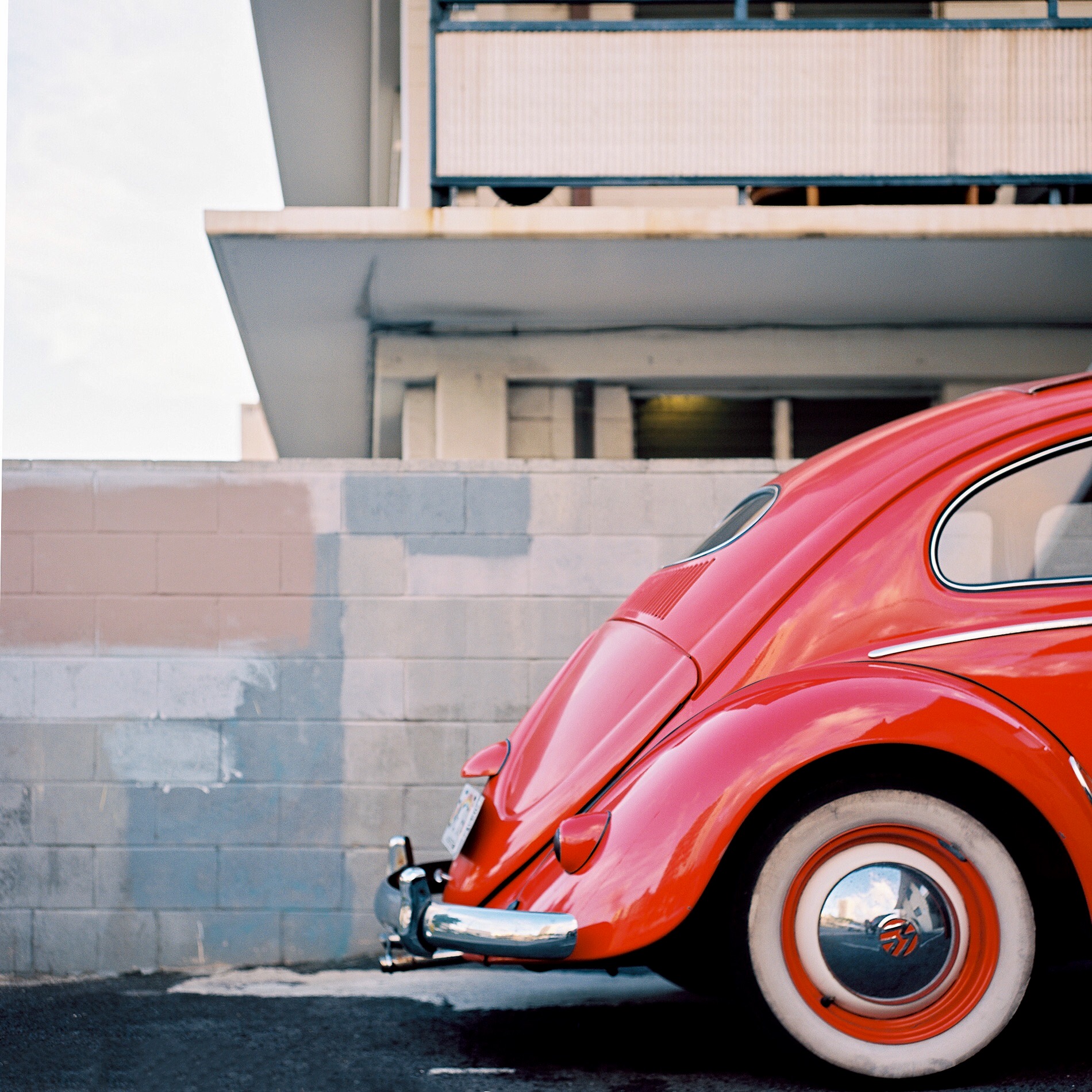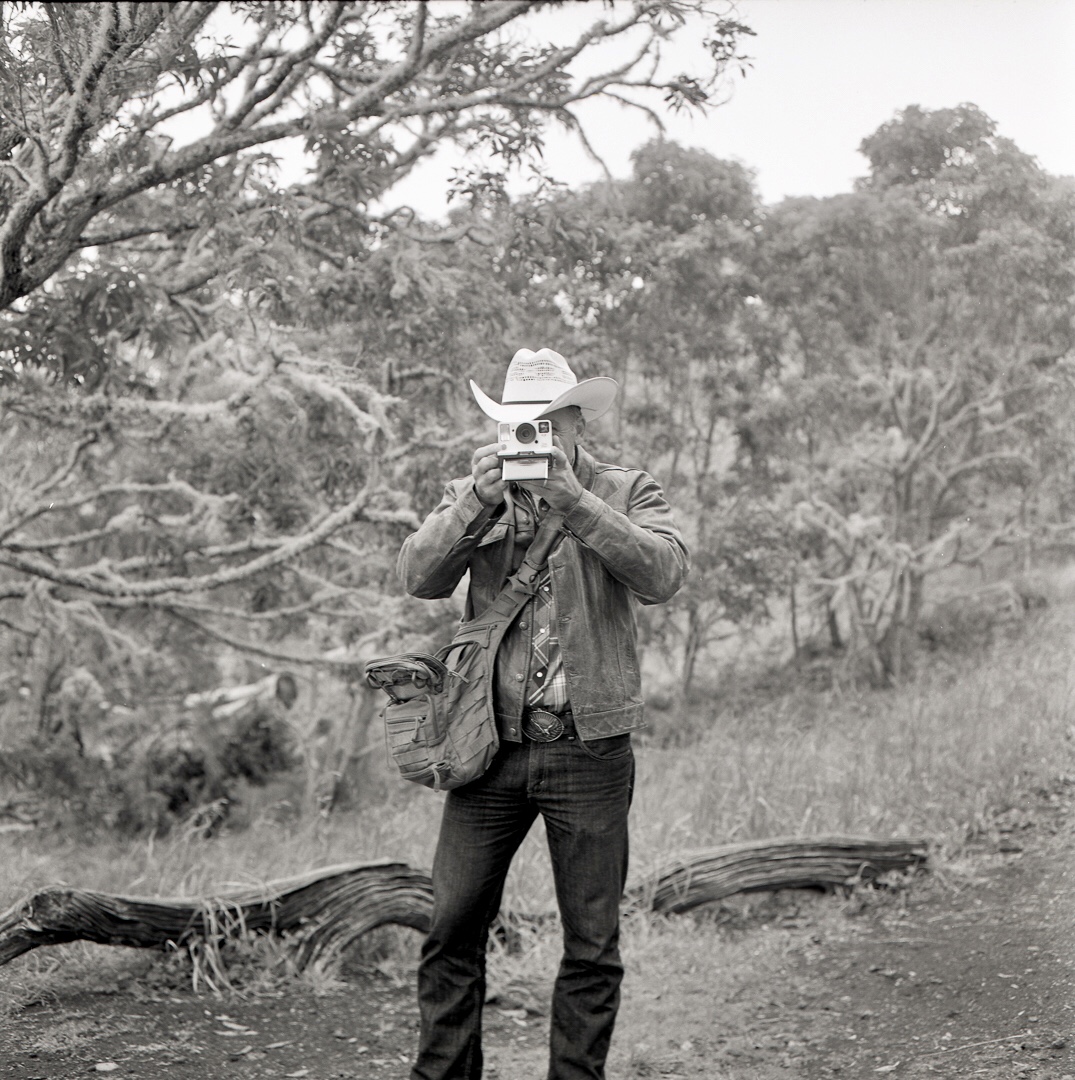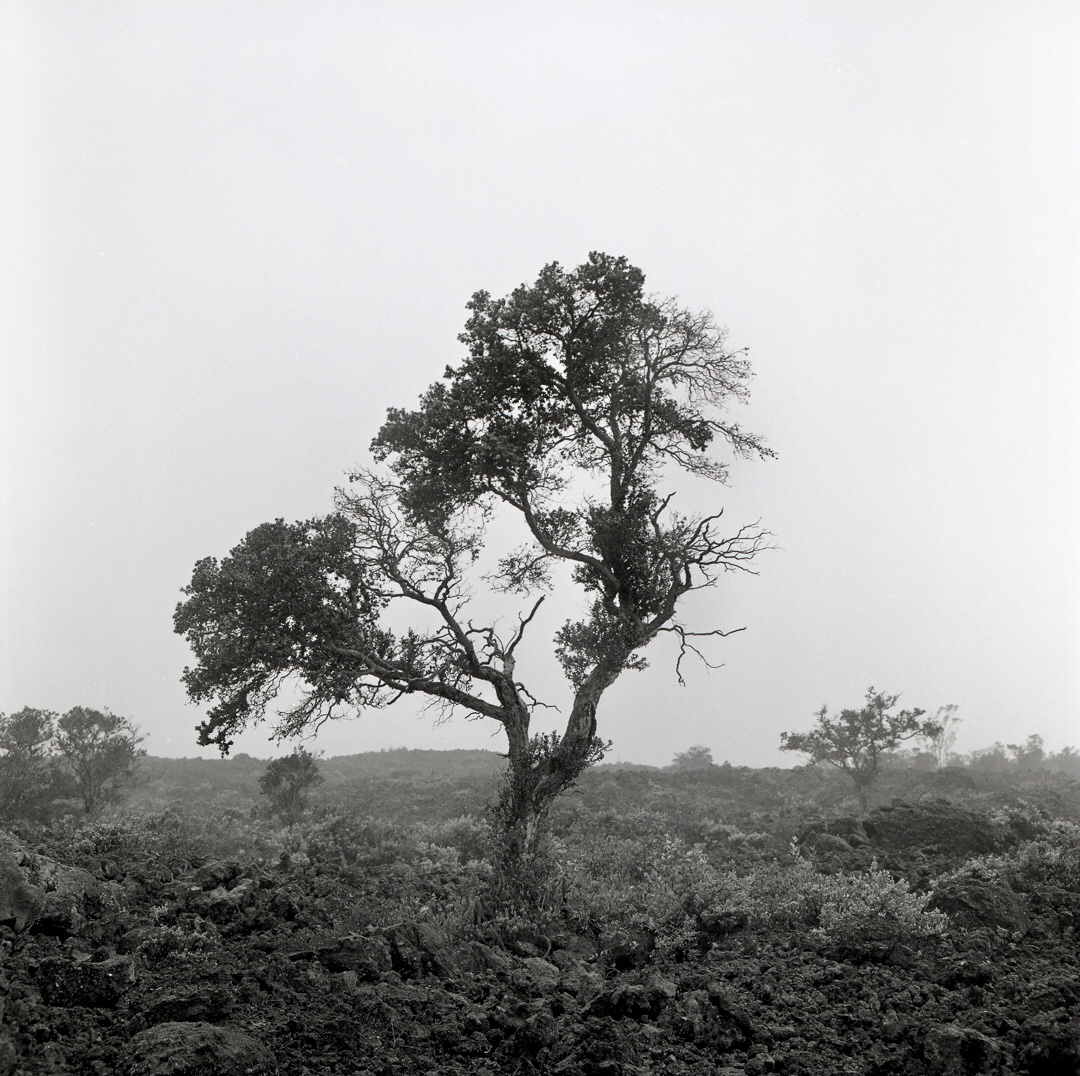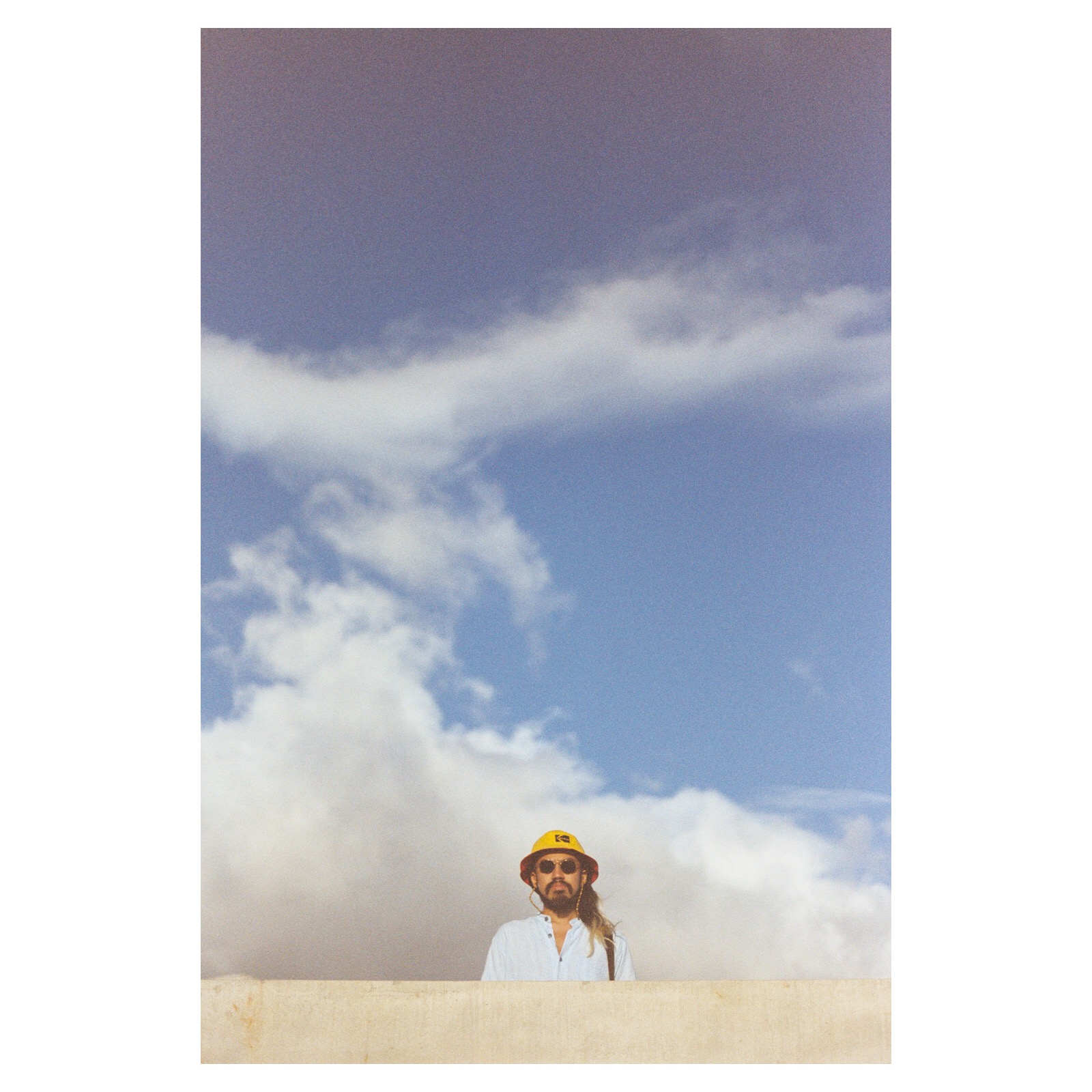CHRIS ROHRER
film's unassuming ambassador
Words by Naz Kawakami // Photos by Vincent Ricafort, Samantha Feyen, and Chris Rohrer
Among weirdos, oddballs, artists, and strangers, you will find Chris Rohrer - camera at the ready, smile on his face. If you shoot film in Honolulu, you probably know him - Chris is a man of the people. His photography, shot mainly on 120 black and white, but ranging from polaroid to large format, is subtle and beautiful, capturing neglected individuals and scenery with a charm and finesse that is unmistakably his. Chris has been shooting for around 10 years, ironically having started shooting in the mid 2000’s, the period in which when film was on seemingly on its way out. He mostly shoots his Rolliflex TLR, but it all depends on the circumstance, the subject, and how he’s feeling that day.
I’ve been an admirer of Chris and his work since I started shooting, and he’s been my go-to guy for all things film. I’ve been known to bother him in the middle of the night while I’m struggling in the darkroom and he’s probably asleep. He always answers my questions or points me in the right direction, he’s the helping type. But I’m not here to sing his praises, I’m here to write about his big-ass camera. His Kodak 8x10 large-format accordion style camera, to be precise. For those that aren’t savvy to antiques, the camera that he shoots is a both a relic and a work of art. It’s dark burgundy bellows and stained wood structure make the equipment as appealing as the images it takes. Originally manufactured in the early 1900’s, this beast of a photo machine shoots sheet-size 8x10 pieces of film.
“BUT IM NOT HERE TO SING HIS PRAISES, IM HERE TO WRITE ABOUT HIS BIG-ASS CAMERA.”
What I found fascinating about Chris’ use of this camera (and the handful of others who still shoot large format), is how incredibly inconvenient it is to the photographer. You work for each photo and a whole lot can go wrong. The bellows on the body, those accordion-looking flaps, are extremely delicate – one tiny puncture and the whole thing is done for. The camera and tripod weigh somewhere around 50lbs unloaded, and takes at least a day of preparation to shoot. It’s not what I’d call a fun photo experience, but Chris doesn’t see any of that as a deterrent. I went with Chris through his whole process from shoot to print, asked some questions, and tried to get a better understanding of who he is, what his process is, and why he’s putting himself through all this pain.
Where did you get your 8x10 camera?
I went to Hound and Quail for a photography exhibit and I saw it sitting in the store. I thought “oh my god there it is!” I had been looking for an 8x10 but the price was so high that I couldn’t afford one. You can’t get them for less than a couple thousand dollars. I asked my friend at Hound and Quail about it and he said it was for sale and that he’d give it to me for $40, which was less than four pieces of film!
What does it shoot?
It shoots these 8x10 pieces of film, and sheet film in either black and white or color.
So not your typical roll. How much does that stuff cost?
The box I got was a discount, and it was $100 for 25 sheets, about $4 a shot.
Tell me about your subject matter? What do you shoot?
With this camera? Mostly portraits. I think each camera ends up doing specific things for me. Like, the 35(mm) is good for street photography because it’s really fast and easy. With the Rolliflex, its similar to large format but it’s a lot more mobile so I do a lot of landscapes and color film with it.
What are the steps you take before you go shoot?
I’m kind of a wanderer. I like to walk around, sometimes I’ll walk around without a camera and look at things that catch my eye, kind of try and make a mental note to go back. With the portraits, it’s a lot different. Its more about seeing people who are interesting around me and trying to capture them.
As far as the 8x10 goes, what is your technical process? What are the steps you go through to prep?
I load the film into the film holders the day before I’m going to shoot. You have to load it in a pitch-black room. I was by myself in a pitch-black room in an old building at night, and I have to say it was pretty creepy. It’s weird to be in a space like that, it’s not normal, people don’t ever really experience that. It feels like the space infinitely extends around you it’s a really weird feeling. Anyway, you have to feel around for the film and the film holders, slip the film in, and then close it without getting any dust on the film.
The shooting is a little weird too. You can’t look through a viewfinder initially so you have to sort of walk around and envision the composition beforehand. So once I’ve found it, I have to set up this tripod and mount the camera, go under a blackout cloth (Chris uses an extra-large black t-shirt) do a prefocus and fine focus, it’s like a ten-minute process for each shot.
Once everything is ready, I just wait for the moment and shoot.
What’s the moment?
I wait until that tension eases up and people relax and get comfortable in front of a camera. I know being on the other side of the lens is a place that’s a little weird, it gives people anxiety. So after a while that goes away and hopefully whoever I’m shooting doesn’t blink.
What made you want to shoot such a huge camera?
I guess just how formal it is. Sometimes you shoot with an iPhone and its super easy, you pull it out of your pocket and shoot away. 35mm is the same, and 120 is sort of that way as well. With an 8x10, it’s a lot more deliberate. It’s a huge pain in the ass which is kind of the fun part for me (laughs).
Your 8x10 is a pretty old boy, probably saw a lot of use. How do you feel about shooting stuff with so much history?
It’s like each old camera has a soul to them, and to me they’re built so much better. Its made out of metal instead of plastic usually, and sometimes the camera has been around longer than you. Most of my cameras were built way before I came around. Its sentimental too. It’s really cool when people come in (to Treehouse Camera) with their parents’ or grandparents’ cameras and want to start shooting it, it’s cool that you can pass something down. With digital it doesn’t seem like you can pass it down to the next generation. But a lot of these analog cameras are built so well that they’ll still work.
A lot of film photographers shoot process and scan, but you print. Can you explain printing briefly?
Printing is just a reverse camera. You put the negative in an enlarger and instead of light going into the camera, light comes out of the camera through the negative, onto a piece of photo paper. So it’s like you’re making a negative of a negative, which gives you your positive image. It’s hard to explain something like that without any context. Working at treehouse, I run into people often who don’t know what negatives are, its trippy. What’s normal to me isn’t normal to someone else. Even just turning the camera portrait style, people didn’t know you could do that! It’s really fun to teach but really weird to realize people don’t know this stuff.
Why do you think film is getting a second wind but printing is still stagnant.
I think it’s just the space. For some reason people are scared of printing, I don’t know why. Maybe not scared but, I feel like if you develop your own film you can definitely print. It’s pretty easy to find enlargers, maybe it’s space is the issue.
What do you think the value of film is in age of tech?
I think there’s a lot of value in being able to use these cameras. Older film cameras have a history and a soul, as opposed to newer digital cameras that seem more disposable. I think film is also a really good learning tool, because for the most part, you have to live with your mistakes, you can’t just delete them. For me it helps me learn how to shoot and choose compositions so that my margin of error gets smaller and smaller.
Where do you think film is heading? What is the future of the medium?
I think everyone is a photographer now, because your phone takes such good photos. But being so engulfed in the digital world, I think people are looking for a way to escape that a little. I think people really like that whole thing where film forces you to slow down. It’s almost like an escape. Which is weird, as digital technology gets better and better it sounds so strange to go back to something that’s so ‘untechnological’… People are starting to realize that film and digital are two separate things that can exist together, like oil paint vs acrylic paint. There’s a time and place for both of them.
PHOTOGRAPHS TAKEN BY CHRIS ROHRER
Chris Rohrer can be contacted via his website, chrisrohrer.com
@thunderhug




